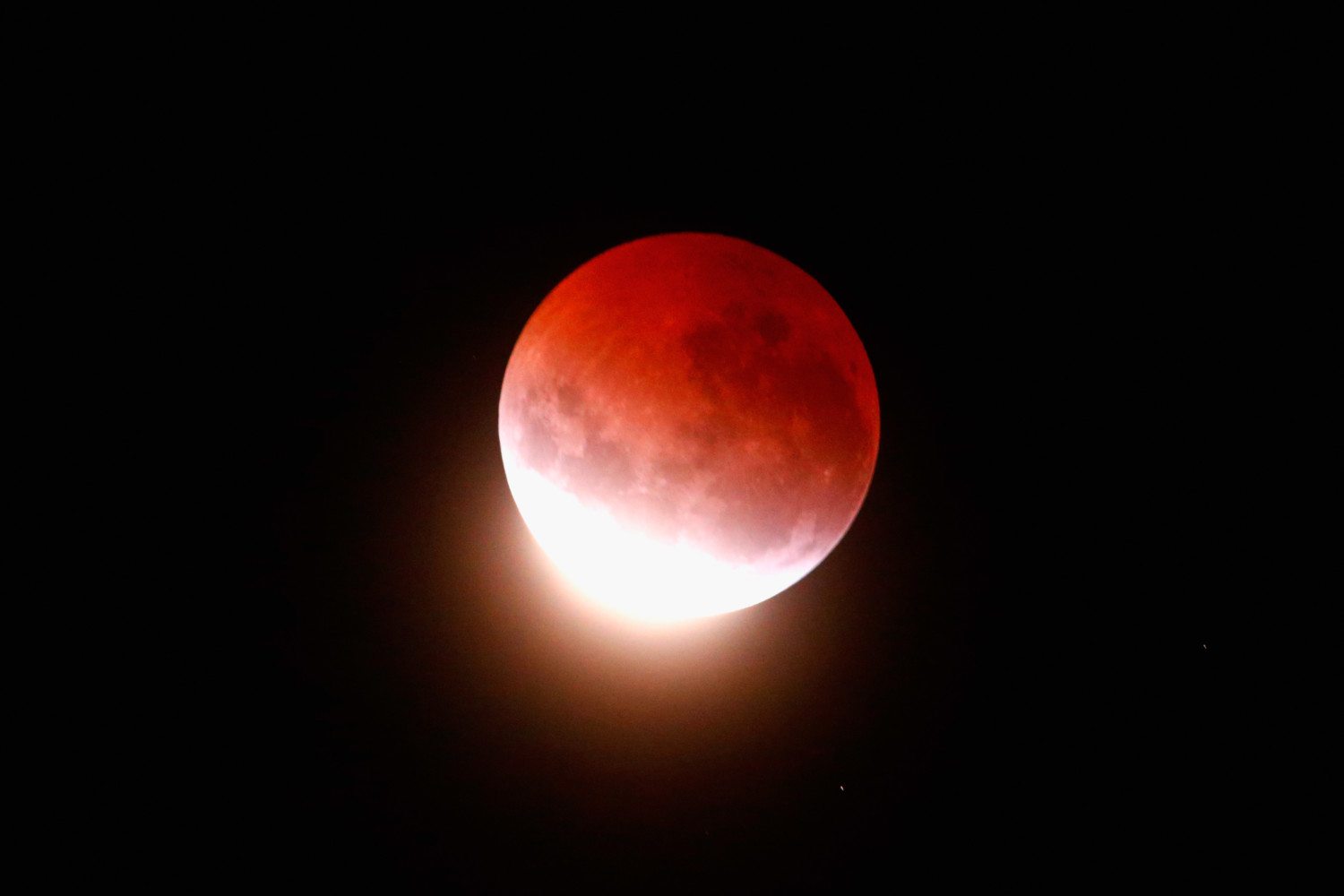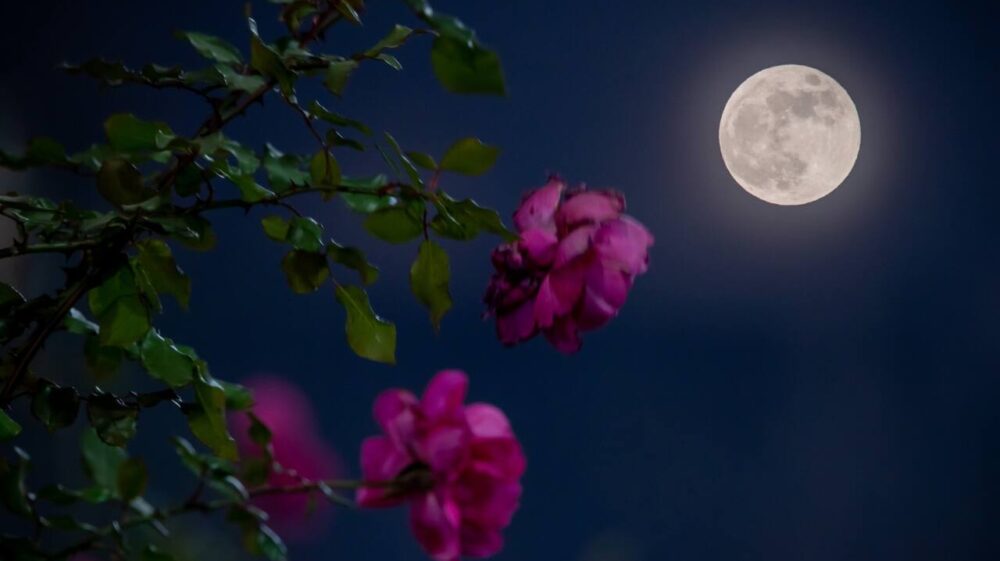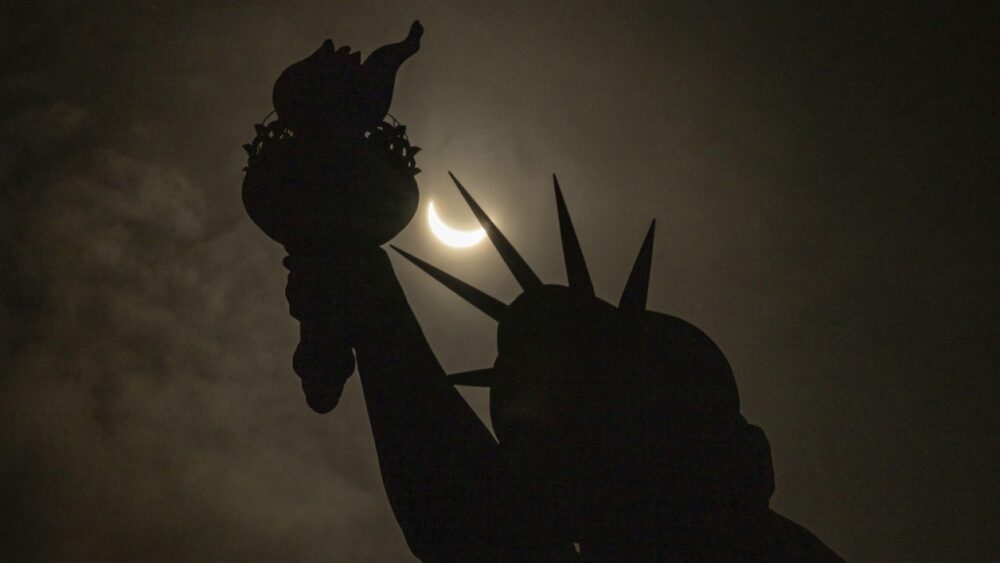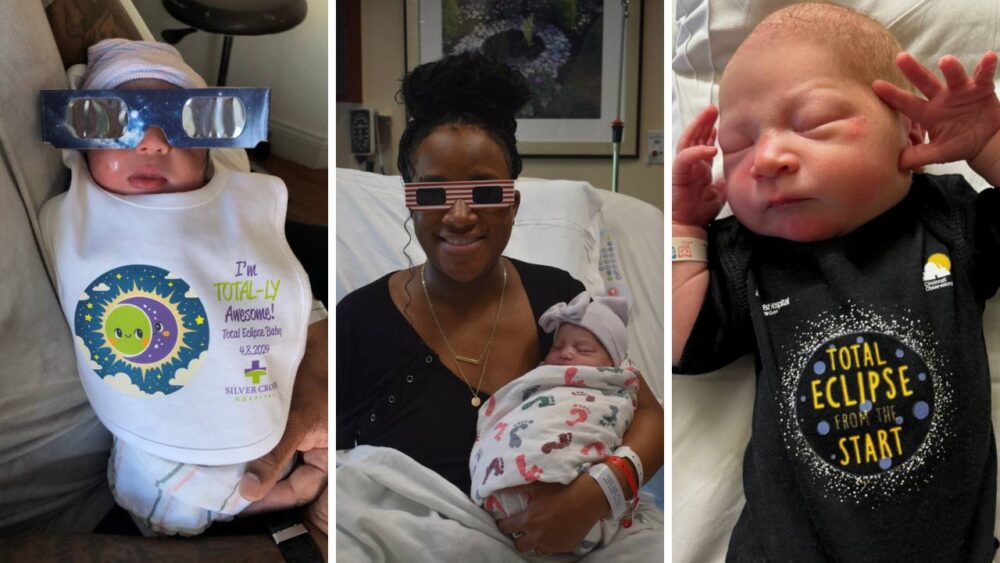Here’s What The Super Blue Blood Moon Looked Like This Morning
In case you can’t tell from the name, the super blue blood moon is no ordinary lunar event. Beginning yesterday and going into this morning, Earthlings were treated to a combination of a supermoon, a blood moon and a lunar eclipse — altogether creating the super blue blood moon.
Not sure what the fuss is all about? Unlike 2017’s solar eclipse when the moon momentarily blocked out the sun, a lunar eclipse (otherwise known as a blood moon) takes place when the Earth rotates between the sun and the moon. The moon passes through Earth’s shadow is is blocked from receiving the sun’s light. However the moon is not only still visible but looks red because the Earth’s atmosphere refracts the sun’s light and indirectly lights up the moon giving it a reddish hue.
We’re not usually ones to throw shade – unless, of course, there’s a #lunareclipse. 🌕 🌎 ☀️ Sorry, @NASAMoon! Read more about the science behind the show here: https://t.co/lXB9Z2zTAe pic.twitter.com/arS4Q3u43B
— NASA Earth (@NASAEarth) January 31, 2018
Lunar eclipses aren’t terribly rare, but this blood moon also happens to be a blue moon, which means it is the second full moon to occur in a month. It is also a supermoon, which means it will be closer to Earth than normal. The result is a moon that will look extra big, extra bright, and very red.
https://www.instagram.com/p/BegGsnoHFwZ/?taken-by=nasa
Super Blue Blood Moon Photos
The eclipse began at 5:51 a.m. EST as the sky became lighter, which made viewing on the East Coast a bit more difficult. However those on the West Coast, Hawaii, or Alaska were in luck. The best views were visible in the west starting at 4:52 a.m. PST.
And it's starting! On August 21, 2017, the Moon blocked the Sun and cast its shadow on the Earth. Now during the lunar eclipse, the Earth is blocking the Sun to cast its shadow on the Moon. #SuperBlueBloodMoon @NASASun @NASAEarth pic.twitter.com/PWdwpT5BwZ
— NASA Moon (@NASAMoon) January 31, 2018
Here is the moon beginning to enter the Earth’s shadow around 7:51 a.m. EST/4:51 a.m. PST this morning:
The Moon has started to enter Earth’s shadow…see it here? At about 7:51am ET/4:51am PT, the Earth will completely block the Sun’s light, casting a reddish shadow on the Moon during what’s called “totality”. Watch the #SuperBlueBloodMoon live online: https://t.co/RcESL4Soyk pic.twitter.com/hXoTOGKcOQ
— NASA Moon (@NASAMoon) January 31, 2018
And here’s a fantastic photo of the moon between the Earth and the sun, all lit up red:
LIVE NOW: #LunarEclipse2018! The Earth is directly between the Sun and Moon, making the lunar surface appear red. You can watch views of the #SuperBlueBloodMoon from multiple telescopes live online! Take a look: https://t.co/RcESL4Soyk pic.twitter.com/VF6U7axlWu
— NASA Moon (@NASAMoon) January 31, 2018
And that was it! The next super blue blood moon won’t be until Jan. 31, 2037 so you’ll have to wait awhile for this celestial event to occur again.
Science is so cool, isn’t it?






